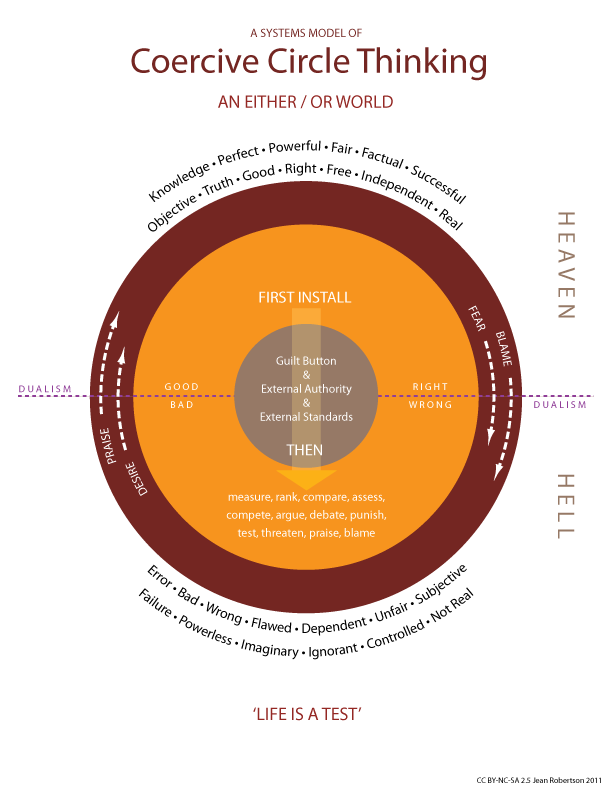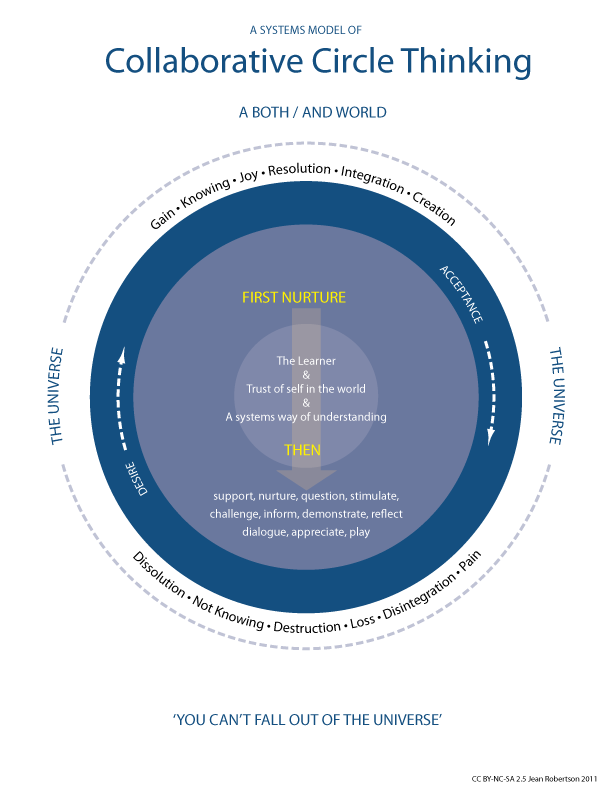The following maps explore some of our deepest assumptions as individuals and as a culture about how the world works. The maps are descriptions from a systems or ecological point of view of how things actually work with us, not prescriptions of what should happen, and they are maps of two very different kinds of experience.
The coercive or vicious circle is the map of the old common sense – the core of the institutional and cultural thought system within which we have lived for the last 6-10,000 years coming down from the beginning of civilization and history and continuing into the present. The collaborative or benign circle is the new common sense or understanding that is evolving within the old.
The terms ‘vicious’ and ’benign’ are not equivalent to good and bad (that perspective is itself part of the dualistic structure of the vicious circle itself) but instead describe the nature of the outcomes of each system. The first systematically works against what we want, and what supports us, generating paralyzing double binds or the treadmills of vicious circles; while the benign circle has effects that work towards what we value and what supports as well the system or whole that we are part of.
A common sense is not an ideology or set of beliefs as we usually think of beliefs, but the underpinnings of our thinking. A common sense is a shared practice of a way of thinking that is a bedrock for very differing beliefs about how the world is. The common sense of the previous several thousand years is the basis of both Christian and Islamic beliefs, Marxism and capitalism, religions and scientific thought.
The core assumptions of the common sense are in the centre of the circles. This is the level of paradigm – the understandings we hold about how the world works, understandings that generate the kinds of structures –political, economic and social – which in turn create the patterns of events we experience every day.
Each circle is an integrated system of thought, an ecology of underlying ideas, people and actions. The assumptions within each circle fit together intricately to create a perfectly coherent and understandable system of thought, feeling and action. If you grasp the core assumptions and how they interplay, the characteristics of the system that emerges become understandable and predictable in nature. The assumptions lead to behaviour that confirms the assumptions and tends to draw out more of that kind of behaviour which again reinforces the assumptions. The circle is the line we trace as we move through time, thinking, acting, getting feedback, thinking, acting. The driving emotions and mindsets fuel our circling (or spiraling – you could see it as a spiral seen from the top, with us moving through time, coming back to similar places, though never the same.) And in real time, it is not a simple circle; many parts of our lives are all moving at once, creating a web.
Diagrams and distinctions
The Circles Maps diagrams are copyright 2011 Jean Robertson.

This work is licensed under a Creative Commons Attribution-NonCommercial-ShareAlike 4.0 International License.


Subscribe for Updates